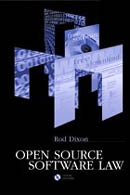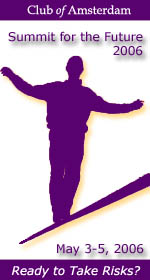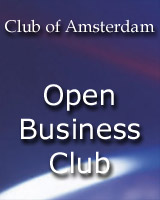
IP Value 2005

| IP Value 2005 by PricewaterhouseCoopers […] A great web of bilateral tax treaties between countries governs the right to tax, the allocation of income and profits, the provision of credits and in certain circumstances allows governments the right to decide among themselves how much tax will be charged. The OECD has a Committee on Fiscal Affairs under which more or less permanent working parties steer the evolution of this web and the way in which the concepts used are to be interpreted and applied. It would be very surprising if intellectual property managed to escape this broad net. It rarely does. From tax credits for research and development (R&D), through allowances for intellectual property assets and withholding taxes or VAT on royalties to capital gains taxes on disposals, the whole cycle of intellectual property creation and use is affected by our systems of taxation. The problem, as the Romans discovered with the taxation of business profits, lies in two areas: identifying the person and measuring the value. How much was actually spent on R&D? Who spent it? Who owns the intellectual property being used? Was it sold or licensed? What is it worth? These are all areas of tension between taxpayers and taxing authorities – a tension exacerbated by the inherent difficulty of measuring something that is, by definition, intangible. The Roman solutions to the same tension in business profits, until the Emperor Constantine abolished them, were imprisonment and torture. Today we use accounting and valuation. Unkind people have been known to draw unflattering parallels. The tensions today are, if anything, worse because the creation and use of intellectual property within a multinational group are generally poorly measured and difficult to track. This is the subject of the next chapter, which also highlights some of the specific tensions by reference to recent tax cases reported in various parts of the world. A responsible approach to tax on intellectual property is about three things: complying with your obligations; paying what you should without overpaying; and taking the relief that is available. The following chapters provide some insight into these areas, dealing with transfer pricing, tax valuation as it affects the transfer or use of intellectual property and R&D credits. The point about systems is that they can be understood, applied and dealt with. One of the best ways to deal with tax systems is to have a system of your own to deal with them. Call this a policy. Then the people that apply the policy – the managers, the lawyers, and the business people, do not need to know the detail of how something is taxed, the rates that apply or the minutiae of why the policy works. They can get on with their jobs. For intellectual property within a multinational group the issues can be complex but the policies can be relatively straightforward. “We deal with R&D so; marketing expenditure is treated thus; and the use of intellectual property is covered in this or that way.” Consistency of treatment reduces administration and is attractive to tax authorities, it helps make things easier to explain. Properly prepared, a good policy will link into other areas such as the legal department – “patents and trademarks are registered by this or that company which licenses their use”; and will match the commercial operations of the group – “R&D budgets are agreed by these people and the costs are charged on such and such a basis.” Exceptionally, but growing more common, policies will take disclosure requirements into account to ensure that what is reported for financial and fiscal purposes draws on the same information systems. All of this requires a degree of discipline, some foresight and a willingness to tackle what has always been recognised as a difficult area. As reporting requirements become more detailed, the additional visibility and transparency that brings to the area of intellectual property make it more likely that the effort required will be repaid in terms of managing tax audits, fewer tax adjustments or less interest and penalties. As the next chapter shows, good policies are no guarantee of an easy ride but they serve to smooth the road, reduce the cost and increase the chances of winning. In short, there is an answer to the rather daunting picture painted at the beginning of this chapter. It depends on being prepared, on recognising intellectual property for what it is – an integral part of the value chain for most businesses – and building a policy around that. For the full document: click here |

News about Intellectual Property

Patenting Art & Entertainment
Patenting art and entertainment is where the patenting of software was twenty years ago. As the number of software patents continues to rise in Europe, the issue of the validity of such patents arises, especially given that software patent quality on both sides of the Atlantic is poor. For such patents, (non-patent) prior art will be needed for use in oppositions, lawsuit defenses, and licensing analyses, both in European and American forums.

2004 Top Patent Owners
by IPO
1) IBM [3.248 patents]
2) Hitachi [1.939 patents]
3) Matsushita Electric Industrial [1.986 patents]
4) Canon [1.867 patents]
5) Hewlett-Packard [1.783 patents]
6) Micron Technology [1.760 patents]
7) Intel [1.605 patents]
8) Samsung Electronics [1.604 patents]
9) Sony [1.500 patents]
10) Siemens [1.477 patents]
News about the future

Truveo
Truveo has spent the last couple years developing some new technology to find all of the best video on the web. It is ready for some beta testing.
Finding all the video files on the web is only part of the challenge. For video to be searchable, it is also necessary to collect meaningful text metadata to associate with each video file. Of course, we rely on standard techniques, such as mining closed-caption transcripts and importing RSS feeds. The vast majority of video on the web, however, does not have any closed-caption or RSS metadata available. Fortunately, our visual crawlers come to the rescue. Whenever our visual crawlers find a new video on the web, they can also “visually” examine the context of the surrounding web application. In most cases, this examination reveals a bounty of rich and detailed metadata related to every video.

ITER
ITER is the experimental step between today’s studies of plasma physics and tomorrow’s electricity-producing fusion power plants.
The objective of the ITER machine is to demonstrate the scientific feasibility of fusion, with extended controlled burn and, marginally, ignition, for a duration sufficient to achieve stationary conditions on all time-scale characteristics of plasma processes and plasma-wall interactions. To do so the installation will produce 500 MW of fusion power during pulses of at least 400 seconds. The facility will also demonstrate key fusion technologies.
Next Event: Wednesday, September 21, 16:30-19:15

the future of Journalism – Ethics in Journalism
Wednesday, September 21, 2005
Registration: 16:00-16:30, Conference: 16:30-19:15
Where: PricewaterhouseCoopers, Prins Bernhardplein 200, Amsterdam [next to Amstelstation], free parking.
With
Kamiel J. Koelman, Associate Professor, Computer/Law Institute (CLI), Vrije Universiteit: Open source software and software patents
Hans Bousie, Owner, Bousie advocaten: Intellectual property and intelligent ownership
Hedda Pahlson-Moller, Managing Director, Omnisource International, Client Executive, Evalueserve: Trends in IP Offshoring
and our Moderator Marc Bolick, CEO, Dmarc8 International
Looking Out for the Future: An Orientation for Twenty-first Century Philanthropists
Looking Out for the Future: An Orientation for Twenty-first Century Philanthropists
By Katherine Fulton and Andrew Blau, Global Business Network and Monitor Institute
Your passion may be curing disease, reforming education, supporting artists, fighting hunger, or anything else that philanthropists support. But have you noticed that philanthropy itself is changing?
The final report of our four-year initiative shows you how long-term trends are combining to create a new reality for every gift and every giver. One result is that anyone who wants to give has more choices than ever. We believe that if you understand how philanthropy is evolving and could evolve in the next generation, you will make better decisions today in support of the issues, institutions, and communities you care about most.
Looking Out for the Future: An Orientation for Twenty-first Century Philanthropists is designed to help you make sense of your choices in four ways. First, we explain the new context for philanthropy, which we call “the new ecology of social benefit.” Then we show you how many different types of philanthropists (individual and institutional) are responding in imaginative ways. The new context and the emerging responses to it will combine to create the future of philanthropy, which we explore next by telling stories, looking back from the year 2025. Finally, we outline several principles to help you choose your own path into the future.
For an overview of the contents of Looking Out for the Future, consult the executive summary.
You can also obtain the full report
Recommended Book

Open Source Software Law
by Rod Dixon
Provides a broad introduction to the area of software licensing in the information age. Helps professionals and students to understand the basic philosophy and key issues of open source license. Explains the legal framework that has been developed to support the increasingly popular Internet-based open source and free software community.
Eco-resort, Guludo, Mozambique
Eco-resort, Guludo, Mozambique
Cullum and Nightingale Architects
The Guludo eco-resort is located within the newly established Quirimbas National Park. The project aims to bring together high class tourist facilities and ecological concerns within a development agenda. Undertaken in consultation with the local community, a portion of the profits will be ploughed back into the village and district.
The resort is arranged as a series of small-scale buildings strung out along a path in the manner of a traditional village. A central ‘hub’ consists of the main public buildings sited around an open courtyard, with a covered dining area overlooking the sea. Guests are accommodated in independent bandas arranged north and south of the ‘hub’ facing directly onto the beach.
The buildings are built using largely local techniques, drawing on local skills and labour, and developed and adapted as necessary to suit the particular form and requirements of the individual buildings. A key element of the design is the use of sustainable energy sources – solar power and heating, methane gas production, compost toilets, and the buildings are designed to maximise natural ventilation and shading.
It is intended that the standard of design, construction, and ecological and developmental responsibility of Guludo eco-resort will be of the highest quality. The resort should be a model for future developments and should be capable of being audited against international standards.
Climate Change: Risk and Vulnerability
| Climate Change: Risk and Vulnerability Australian Greenhouse Office There is little doubt that Australia will face some degree of climate change over the next 30 to 50 years irrespective of global or local efforts to reduce greenhouse emissions. The scale of that change, and the way it will be manifested in different regions is less certain, but climate models can illustrate possible effects. Applying a range of these models to Australia for the range of global emissions scenarios generated by the Intergovernmental Panel on Climate Change (IPCC) for its Third Assessment Report, CSIRO has identified a number of possible outcomes: |
| an increase in annual national average temperatures of between 0.4° and 2.0°C by 2030 and of between 1.0° and 6.0°C by 2070 — with significantly larger changes in some regions by each date;more heatwaves and fewer frosts;possibly more frequent El Nino Southern Oscillation (ENSO) events — resulting in a more pronounced cycle of prolonged drought and heavy rains;possible reductions in average rainfall and run–off in Southern and much of Eastern Australia with rainfall increases across much of the Tropical North — as much as a further 20 per cent reduction in rainfall in Southwest Australia, and up to a 20 per cent reduction in run–off in the Murray Darling Basin by 2030;more severe wind speeds in cyclones, associated with storm surges being progressively amplified by rising sea levels;an increase in severe weather events — including storms and high bushfire propensity days; and a change in ocean currents,possibly affecting our coastal waters, towards the end of this period. |
| Of these possible results, the most likely are for temperature change (including heatwaves and reductions in frosts), sea level rises and increases in cyclonic wind intensity. This does not mean that the results of the models for other possible dimensions of change — rainfall, run–off, non–cyclonic severe weather events — should be disregarded, as they still provide a useful basis on which to test the sensitivity of different systems — natural and human — to the possible scale of change. They should not, however, be regarded as forecasts but rather as indications of possible directions and scale of change. The wisest approach is to use these projections as ‘thought experiments’ to assess the additional risk — the potential exposure to hazards to life, biodiversity, or economic interests — that changes on this scale could pose. The period through to 2030, and to a lesser extent 2050, is the one that is most relevant today for decisions about adaptation strategies. This is because most decisions that could be affected by climate risks involve assets and business systems whose economic life falls within or near this time horizon. |
Summit for the Future 2006
Summit for the Future 2006
Club of Amsterdam
May 3-5, 2006
| What is the Summit for the Future 2006? The Club of Amsterdam presents its second, global “Summit for the Future 2006” bringing together Thought Leaders to discuss significant, global challenges and opportunities. This year we focus on the subject of risk and the role of risk in innovation and global growth. Why risk? Without risk taking there is no progress, no growth and no prosperity. The Summit is an opportunity for participants to stand back and reflect upon the role of risk in enterprise and society, on how the global spectrum of risk is changing and to acquire new tools and thinking with which to harness risk as a force for growth in the future. |

Club of Amsterdam Agenda
| NEW: .Our Season Events are Wednesdays 16:30! | |
| 16:00-16:30 Registration 16:30-17:45 Part I: Presentations 17:45-18:15 Break: Drinks and evtl. live music 18:15-19:15 Part II: Discussion | |
| Club of Amsterdam Season Events 2005/2006 | |
| .Sept 21 | the future of Ideas – Intellectual Property |
| .Oct 19 | the future of the USA |
| .Nov 30 | the future of Software Architecture |
| .Jan 25 | the future of Futurist Tools |
| .Mar 1 | the future of Electronic Identity |
| .Mar 29 | the future of Governance |
| .Apr 26 | the future ofDrugs & Pharma |
| .May 31 | the future of Reputation Management |
| .Jun 28 | the future of Journalism – Ethics in Journalism |
Club of Amsterdam Open Business Club






Customer Reviews
Thanks for submitting your comment!